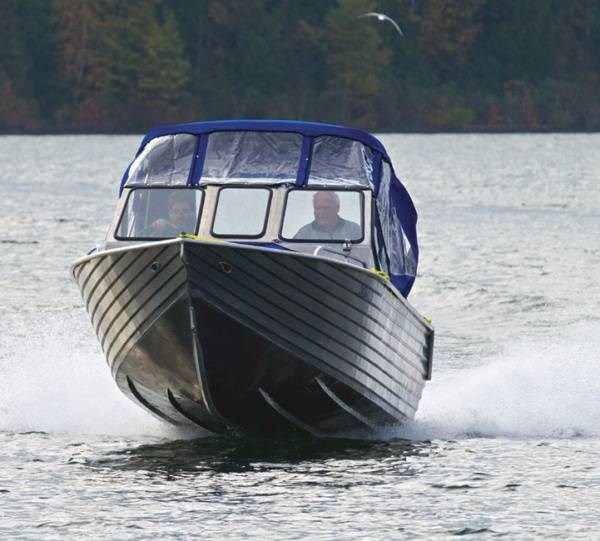David Ham confesses he has always wanted to learn the art of boatbuilding, so when the opportunity came to purchase Henley Boat Manufacturing, he was eager to test the waters.
A former hardware store and Manitoulin Air Service Ltd. owner, Ham bought the business in 1996 from Collin Gourley of Picton, Ontario. He relocated it to Manitowaning on Manitoulin Island. The former proprietor followed. Gourley passed his knowledge on to Ham, who in turn is providing seven full-time staff members with the same expertise.
It’s a good thing, as business is going full-steam ahead.
“We are building boats hand over fist,” he says.
Workers have just completed building a 26-foot boat for the Department of Fisheries and Oceans (DFO). Since scientists will be using it in the high Arctic waters, government specifications were tight.
Amine A. Haïder, technical inspector, likes what he sees.
“I can tell you these people are very open-minded; they want to learn a lot and that is a good sign,” he says.
His company’s flexibility could make the boat market Ham’s oyster, he adds.
Currently, Ham is bidding on boatbuilding contracts in Australia and for the United States Army Corps of Engineers. He is currently constructing vessels for Nigeria.
Henley is known for lapstraked, or beveled, hulls. The feature is their signature mark.
“We are the only company in North America doing that,” Ham happily points out.
Aluminum is used throughout the vessels, with stronger, more durable grades used for the hull and sides. A stress roller and presser form the boat sides into ridged panels, then workers weld the pieces to the frame.
ASA Alloys Inc. supplies all the material from crossbeams made in China, to deck material made in Greece, South Africa or Spain. Side material come from Siberia since it is the only place Ham can purchase that calibre of aluminum.
The average cost of a 16-foot boat is an estimated three times more expensive coming from Henley, simply due to the material, construction and durability.
“These are not the average run-of-the mill boat,” he says. “It’s a lifetime investment.”
With an average of 12 to 17 boats made each year and 75 per cent of revenues from exports in 2004, Ham says he hopes to exceed last year’s revenue exports for 2005.
But Ham is working about as fast as he can these days. He’s had to turn down contracts for lack of a skilled workforce.
“(We) could not find skilled people,” he says.
Fabrication skills are sadly lacking locally. He has to hire from United States or southern Ontario, and has little time to train.
“We have boats to build. We don’t have a school to run.”




